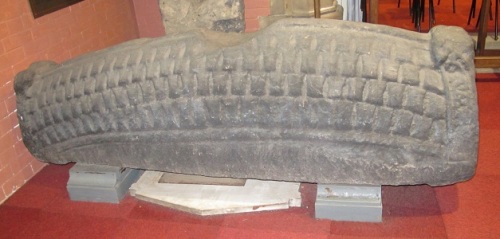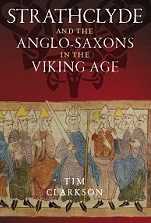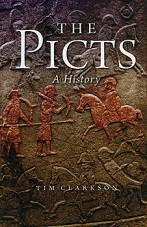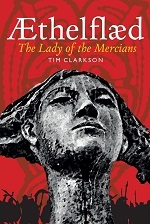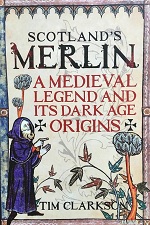It’s been fifteen months since I last posted anything on this blog. My absence could imply that not much has been happening as far as Govan’s heritage is concerned, or that I’m no longer involved with the projects there, or that my interests have moved on to other things. None of these explanations would be true. In fact, my long silence has been entirely due to having less time for blogging during this period, mainly because I was embroiled in writing a new book. I was also caught up with various other commitments unrelated to history and archaeology.

Things are now slowly returning to normal. The new book (Scotland’s Merlin) is finished and published and finally off my plate. I’m starting to squeeze out a bit more time for social media activity (such as blogging and tweeting) and catching up with stuff that has been on the back burner since last summer. The catch-up includes dealing with a backlog of news about Govan, some of which will no longer be news at all. So this blogpost is a quick update to get the rusty wheels at Heart of the Kingdom turning again. What follows is a brief summary of my involvement with events and activities at Govan in the past 12 months or so….

Govan Fair 2015: my article on the theme of “Congregation” for the programme.
Friday 5th June 2015 saw me attending the Govan Fair for the first time. It was the third consecutive year I’d written an article for the printed programme, so I felt it was high time I showed my face. The whole thing was fabulous and it was great to meet up with a number of friends I hadn’t seen in a while. In the early evening I joined architect Andrew McAvoy and his family in the circus tent to watch the crowning of the Queen of the Fair. The ceremony was attended by the First Minister of Scotland, the Provost of Glasgow and other dignitaries. Afterwards, the grand parade along the main street was a special highlight – a colourful pageant of floats, bands, dancers and walkers, with the venerable Sheep’s Heid borne aloft at the front. The weather stayed fine and the sunshine held right through to the end.
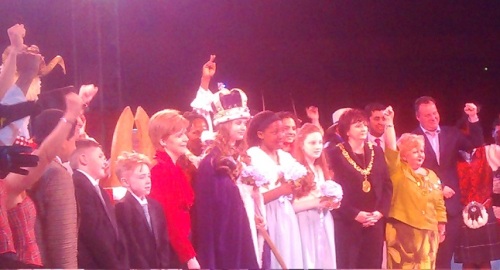
Govan Fair 2015: the coronation ceremony.
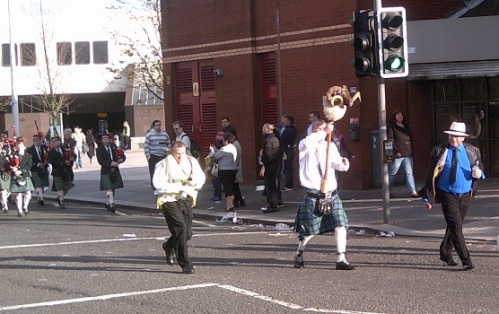
The Sheep’s Heid leading the parade.
My next trip to Govan was in November, when I was invited to give a lecture at the old parish church. The topic was my book Strathclyde and the Anglo-Saxons in the Viking Age, published in 2014, which deals with the period when the Govan Stones were carved (9th-11th centuries). I was very pleased that the audience was larger than I or the organisers had expected. Many familiar faces were present and it was nice to catch up with them. Also good to meet a lot of interesting new people and make a number of useful contacts.
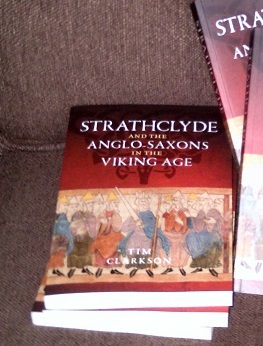
Travelling to Govan means a journey of more than 200 miles so it’s not something I can do on a whim. Hence, I don’t make the trip as often as I’d like, and I usually try to avoid tackling it in the winter. But this year I turned up in the middle of February, to attend another lecture at the church. The speaker was Victoria Whitworth, renowned expert on early medieval sculpture, who shared her incisive theory on the origins and purposes of hogback gravestones (five of which stood barely a few feet away). Victoria challenged my own preconceptions and left me thinking that we actually know a lot less about these enigmatic monuments than the old consensus would have us believe. Her suggestion that the distinctive shape represents a human body is certainly persuasive and seems to me to provide a better explanation than ‘Viking house’ or other theories.

Three of the Govan hogbacks (or “bodystones”?)
I’ll end with news of the recent publication of a graphic novel entitled Quest for the Thirteen Treasures of Govan and Glasgow. This has been produced to accompany a heritage trail which includes various places in Govan as well as the Riverside Museum across the Clyde. The storyline follows Merlin the wizard and his mini-dragon companion as they seek the fabled Thirteen Treasures, some of which are cunningly disguised as architectural features in the modern townscape. I blogged about the trail in 2013 when it was in its early stages. A separate blogpost on the graphic novel is in the pipeline but I’ve mentioned it here because it’s another of the projects I’ve been involved with in the past 12 months.

And that’s the end of this update, which heralds a long-overdue return to blogging about Govan.
* * * * * * *




